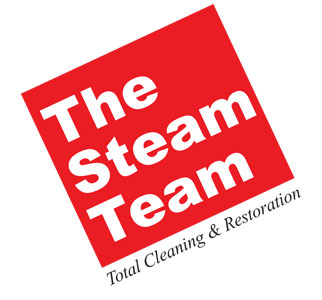Rebuilding from the Ashes and the Depths: A Comprehensive Guide to Recovery After Fire and Water Damage
/Rebuilding your home after fire and water damage
In the aftermath of a disaster, the process of rebuilding a home can seem overwhelming. Whether it's the ravaging force of a fire or the insidious creeping of water damage, the challenges are immense, but so is the potential for recovery. With a clear plan and decisive action, you can transform devastation into an opportunity for renewal. This comprehensive guide outlines the steps to take after experiencing both fire and water damage to your home, providing a roadmap towards restoration and a fresh start.
**1. Ensure Safety First: Before anything else, prioritize safety. Inspect the property thoroughly to identify any structural damage, electrical hazards, or weakened foundations. If there is significant damage, it’s essential to consult with professionals before re-entering the premises. In the case of fire damage, be cautious about ash, which can be hazardous, and in water damage situations, be wary of potential electrical hazards from water exposure.
**2. Contact Your Insurance Provider: Reach out to your insurance company as soon as possible. Document the damage thoroughly, taking photographs and videos. Make a detailed list of damaged items and their approximate value. This documentation will be crucial when filing an insurance claim, ensuring that you receive the compensation needed for repairs and replacements.
**3. Secure Your Property: After gaining approval from local authorities, secure your property to prevent further damage. Board up windows, cover damaged roofs, and tarp exposed areas to keep out rainwater. Securing your property promptly can prevent additional issues like theft or further weather-related damage.
**4. Water Damage Mitigation: In cases of water damage, immediate mitigation is necessary to prevent mold growth and structural issues. Extraction of standing water should be the first priority. Professionals equipped with industrial-grade pumps and vacuums can efficiently remove water. Then, industrial fans and dehumidifiers are used to thoroughly dry the affected areas. Removal of damaged materials, like wet drywall or insulation, is crucial to prevent mold and ensure a thorough drying process.
**5. Fire Damage Cleanup: After a fire, cleanup involves removing debris and charred remnants. Specialized cleaning agents and equipment are used to eliminate the lingering odor of smoke. Fire damage restoration professionals assess structural damage, determining what can be salvaged and what needs to be replaced. Personal belongings, if salvageable, undergo cleaning and restoration processes.
**6. Assess Structural Damage: Engage a structural engineer or a professional contractor to assess the integrity of your home. They can identify compromised structures, ensuring that the rebuilding process adheres to safety standards. Addressing structural issues at the outset is crucial to the long-term stability of your home.
**7. Plan and Prioritize Repairs: Create a detailed plan for repairs and restorations. Prioritize essential tasks, focusing on structural integrity first. Address issues like damaged roofs, walls, or foundations. Once the structural elements are secure, move on to interior repairs, including electrical systems, plumbing, and HVAC. Consult with professionals to estimate costs and establish a realistic timeline for the repairs.
**8. Mold Prevention: In water-damaged properties, mold growth is a significant concern. Proper drying and dehumidification are crucial in preventing mold. Additionally, treating affected areas with antimicrobial solutions can inhibit mold growth. Proper ventilation and maintaining low humidity levels in the future are key to mold prevention in the long term.
**9. Coordinate with Restoration Professionals: Engage reputable restoration professionals who specialize in fire and water damage. Experienced professionals have the expertise and equipment to address the complexities of restoration. They can efficiently handle tasks such as odor removal, smoke damage cleanup, water extraction, structural repairs, and content restoration. Their knowledge ensures that the restoration process is thorough, efficient, and in compliance with safety standards.
**10. Document Everything: Throughout the restoration process, maintain detailed records of expenses, repairs, and communication with contractors and insurance providers. Proper documentation is essential for insurance claims and can also be helpful for tax purposes. Keep receipts, contracts, and any written communication related to the restoration process organized and accessible.
**11. Prepare for the Future: Consider implementing preventive measures to protect your home from future disasters. Install smoke detectors and fire extinguishers, elevate electrical systems, and seal basement walls to prevent water intrusion. Investing in these precautions can mitigate potential damage in the event of future emergencies.
**12. Emotional Support and Coping: Recovering from fire and water damage is not just a physical process; it’s an emotional journey. Seek support from friends, family, or counselors to cope with the stress and emotions associated with the experience. Community support groups can provide valuable insights and emotional solidarity, reminding you that you are not alone in your recovery journey.
Conclusion: The road to recovery after fire and water damage is undoubtedly challenging, but it’s also an opportunity for resilience and renewal. With a combination of swift action, professional expertise, and emotional support, homes can be restored, and lives rebuilt. Each step, from ensuring safety to planning repairs and investing in preventive measures, contributes to the restoration of not just the physical structure but also the sense of security and belonging within the home. As communities come together and individuals demonstrate strength, the process of rebuilding transcends the physical act of construction; it becomes a testament to the human spirit’s capacity for renewal and recovery.



